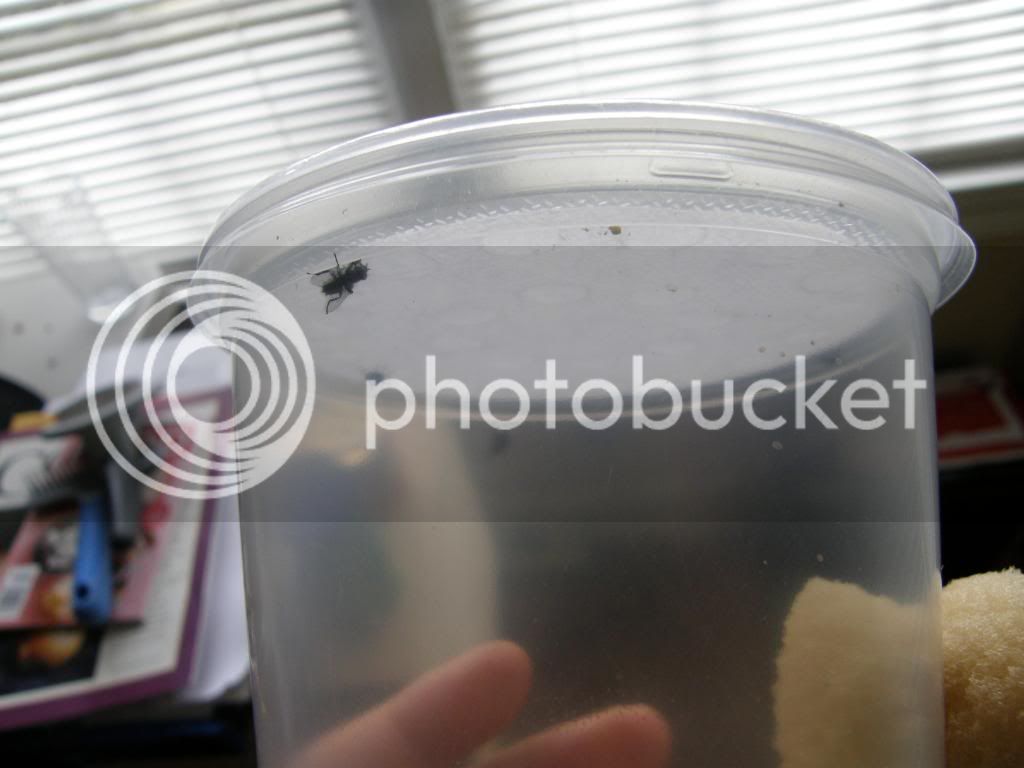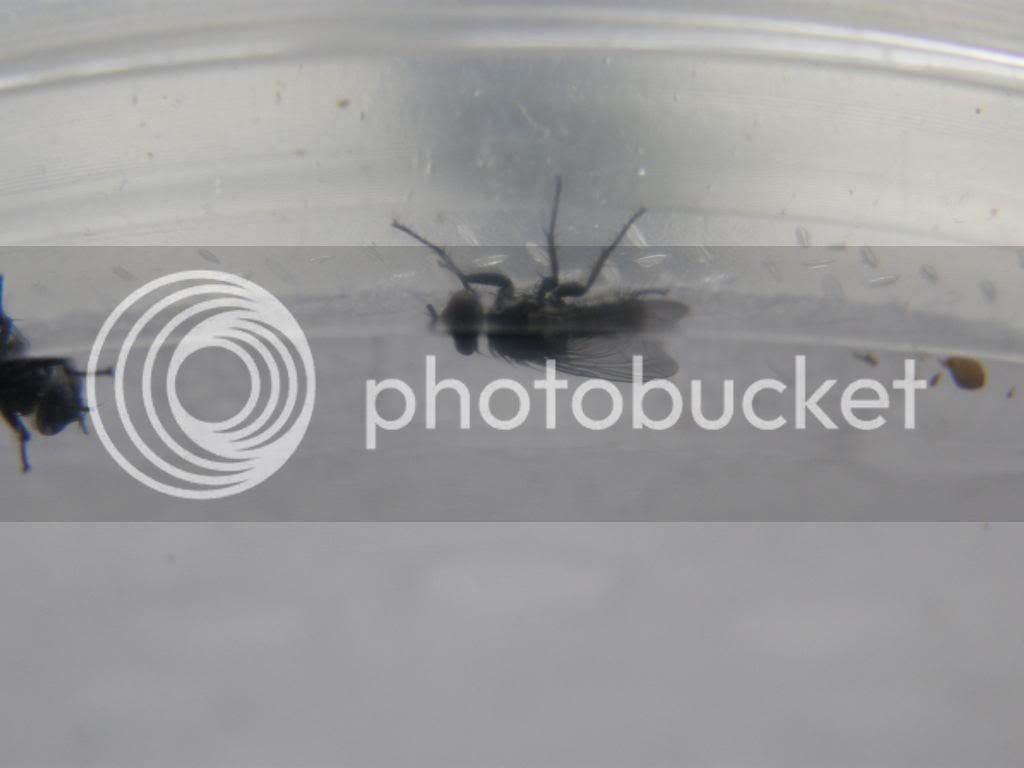could do it a number of waysbut its the wasps that are more likely to paralyze its victims and one guess I have is t hat the mantids eat it and if there is any eggs in the fly that dont get digested prob slowly develop or something like that or lays eggs on plants or vegetation and the mantis or other kind of insect crosses that vegetation and gets infected or the maggots ambush the mantids somehow and get inside but that may be difficult or if a mantis has a wound the fly would somehow quickly lay its eggs on the wound area or something and drop off the eggs or any other kind of way!But I was wondering if since the colder weather os a;ready here can the flies handle the weather and look for places to lay their eggs or something for next year could also be a guess and someone feeds them to the mantids and they get infected thats what I think is happening to 2 of my europeans since kind of odd that only got 3 ooths from one female and one from the other and then they become almost like they were after they became adults which is thin and my one adult looks like it has a large brown area under its wing tip which looks like where a parasite is inside or something too near its sexual area!














































